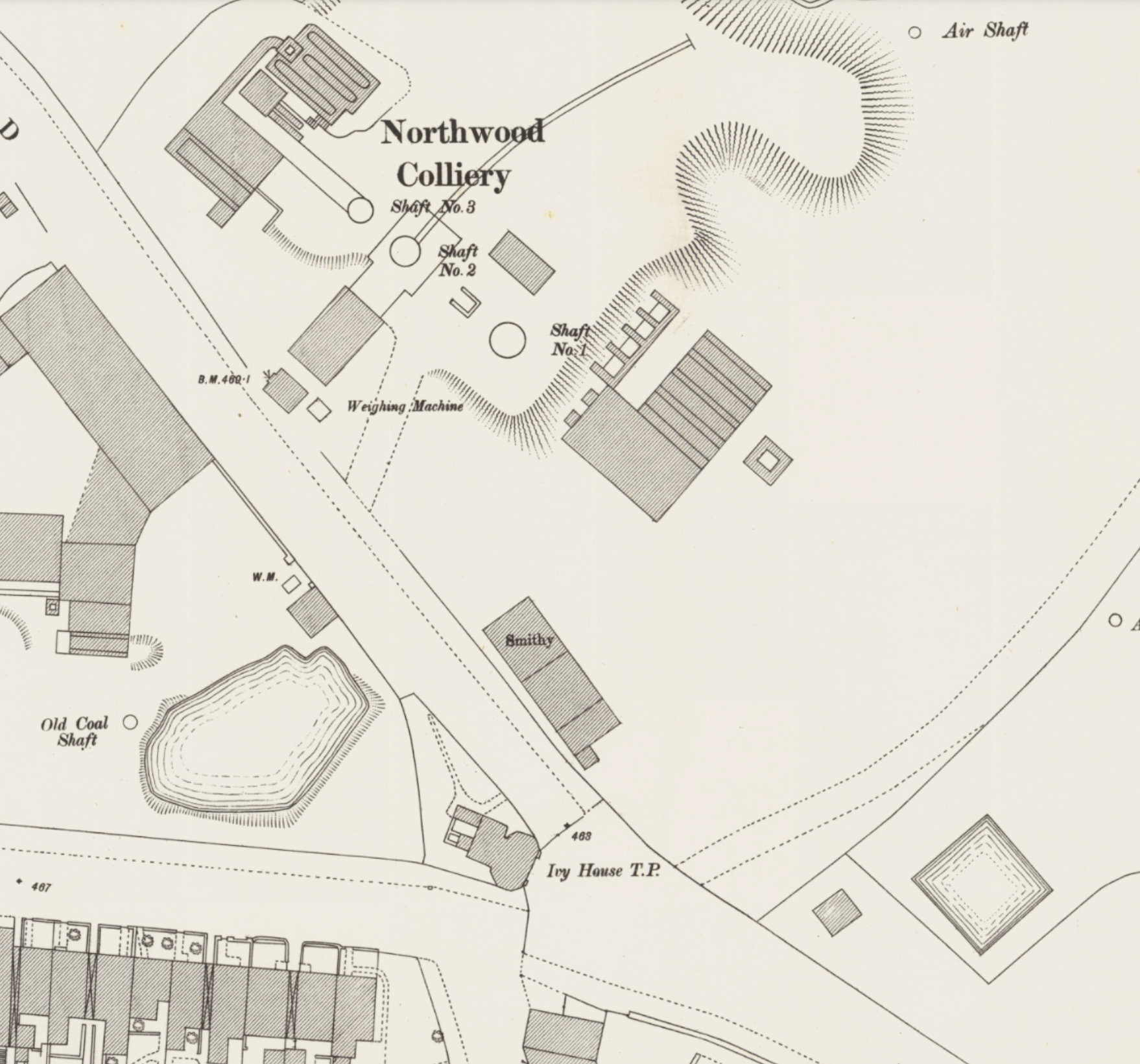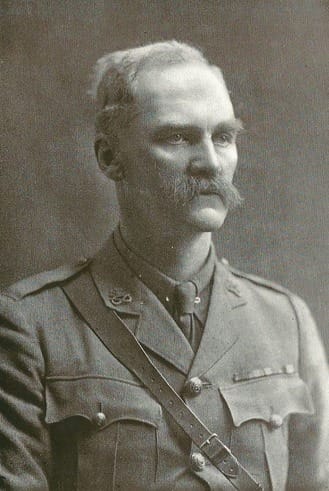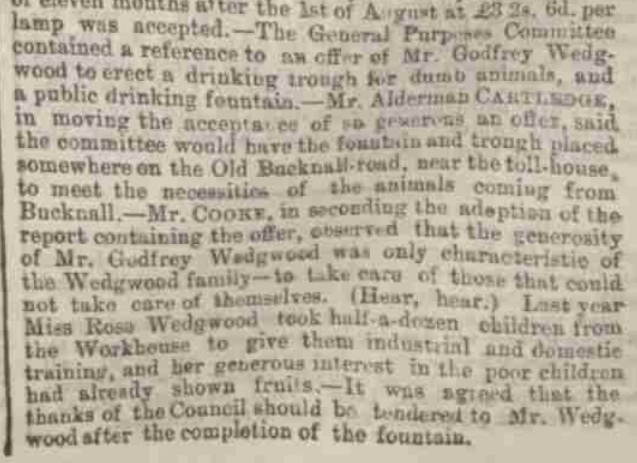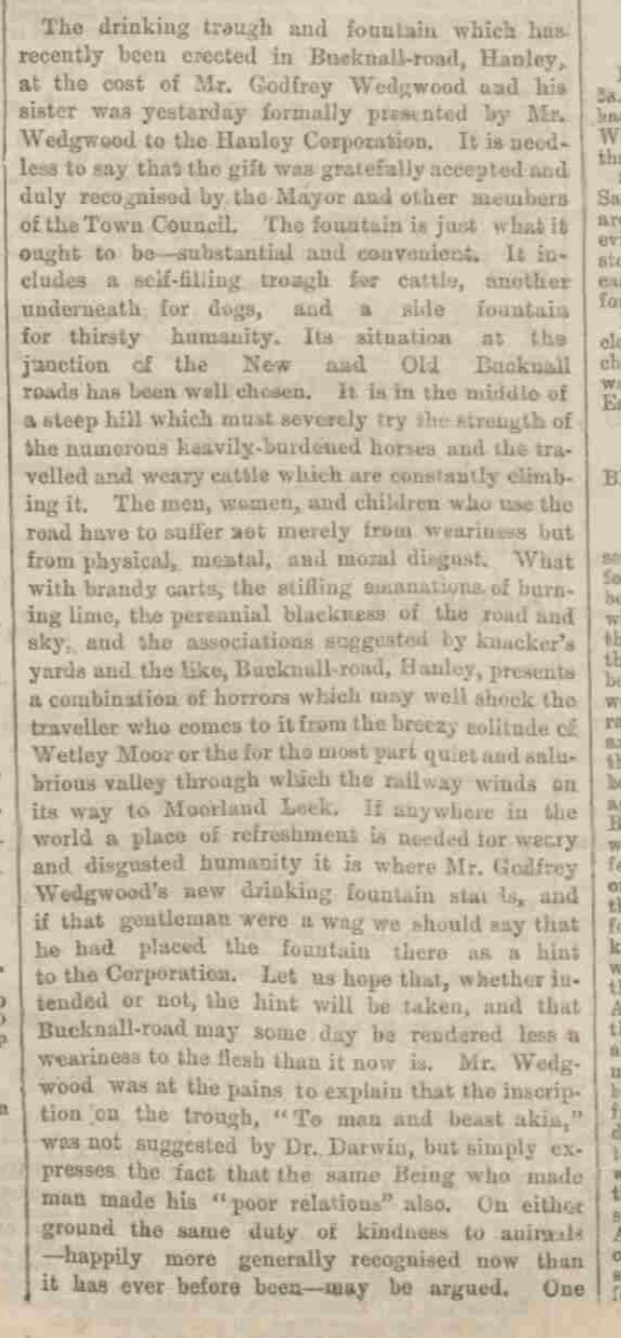Halfway up Bucknall New Road, as you are heading towards Hanley, an unassuming drinking trough stands as a testament to the area's past. Unveiled in September 1879, this trough not only served the practical needs of travellers and their animals but also adorned the landscape opposite the once bustling Ivy House Inn and in front of the old toll house.
Check out my video of The Ivy House Trough, Hanley on YouTube

Historical Background and Location
The trough's placement was strategic, situated at the site of the Ivy House Toll Gate, a pivotal point in the road where many people stopped, half way up the gruelling bank. Toll gates were commonplace in the 19th century, facilitating the maintenance of roadways by collecting fees from passing travellers. This particular toll gate operated until the 1870s, with others located at key junctions like Keelings Lane at Upper Green and the crossroads of Hulton Street and Town Road.

The Benefactor: Godfrey Wedgwood
The trough was financed by Godfrey Wedgwood, a notable figure in the pottery industry and the great-grandson of the esteemed Josiah Wedgwood. Born on January 22, 1833, at Etruria Hall, Godfrey was integral to the family business from 1859 to 1891, alongside his brothers Clement and Laurence. They were instrumental in reintroducing bone china around 1876 and hiring significant artists like Thomas Allen and Emile Lessore.
The inscription on the trough poignantly reads, “TO MAN & BEAST. ALL AKIN. G WEDGWOOD. 1879.”


Personal Life and Legacy
Wedgwood's personal life was marked by both triumph and tragedy. He married Mary Jane Jackson Hawkshaw in 1862, who tragically died a year later after giving birth to their son, Cecil, who later died at the Battle of the Somme in 1916. Godfrey remarried in 1876 to Hope Elizabeth Wedgwood, and they leased Caverswall Castle, living there until 1888. Their contributions to the community and industry left an indelible mark, underscored by his burial in All Saints Churchyard in Moddershall, Staffordshire.
Just like his great Grandfather, Godfrey also had to have his leg amputated, and he was known locally as 'Owd Wooden Leg'.

The Trough's Design and Features
The trough features separate compartments for different users: a large basin for horses, a smaller one underneath for dogs and other small animals, and a side fountain for people, originally equipped with a metal cup. Its innovative self-filling plumbing system highlights the technological advancements of the time, which might still function as the trough typically retains water.




Newspaper clippings about the trough and Godfrey Wedgwood
Other Historical Troughs
Similar troughs exist, echoing the design and purpose of the Birches Head trough. One still stands on Waterloo Road, Cobridge, and remnants of another are visible at the intersection of Eaves Lane and Greasley. These artefacts collectively highlight the region's commitment to public welfare and animal care in the past.

Modern Stewardship
Today, the Birches Head & Northwood Volunteer Group champions the preservation of this historical artefact. They not only maintain the trough but also enhance its beauty with vibrant floral arrangements, ensuring it remains a cherished landmark.

The Mystery of the Move
Curiously, historical records and a lone photograph suggest that the trough was once repositioned. However, details about the when, why, or how of its relocation remain elusive, adding a layer of mystery to its storied existence.
The Ivy House Trough is more than just a water source; it's a symbol of the community's rich history and enduring spirit. Funded by a lineage known for its pivotal contributions to art and industry, and maintained by the dedication of local volunteers, the trough remains a focal point of local heritage and a beautiful reminder of the past's ongoing influence on the present.

Check out my on-line shop for my local photography and art
Check out my recommended reading list

